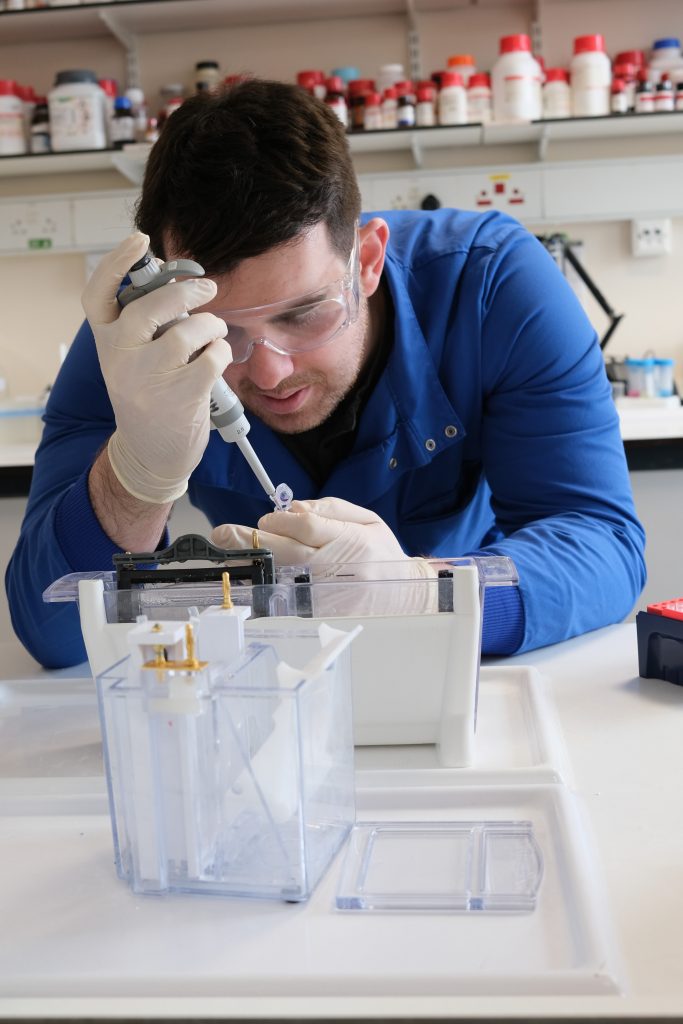Researchers have created a new vaccine technology that, in tests with mice, has demonstrated protection against a wide variety of coronaviruses, including those that could cause future disease outbreaks—even those not yet identified.
This is a new approach to vaccine development called 'proactive vaccinology', where scientists build a vaccine before the disease-causing pathogen even emerges.
The new vaccine works by training the body's immune system to recognize specific regions of eight different coronaviruses, including SARS-CoV-1, SARS-CoV-2, and several that are currently circulating in bats and have potential to jump to humans and cause a pandemic.
Key to its effectiveness is that the specific virus regions the vaccine targets also appear in many related coronaviruses. By training the immune system to attack these regions, it gives protection against other coronaviruses not represented in the vaccine – including ones that haven't even been identified yet.
Immune Response and Research Goals
For example, the new vaccine does not include the SARS-CoV-1 coronavirus, which caused the 2003 SARS outbreak, yet it still induces an immune response to that virus.
"Our focus is to create a vaccine that will protect us against the next coronavirus pandemic, and have it ready before the pandemic has even started," said Rory Hills, a graduate researcher in the University of Cambridge's Department of Pharmacology and first author of the report.
He added: "We've created a vaccine that provides protection against a broad range of different coronaviruses – including ones we don't even know about yet."
The results were published in the journal Nature Nanotechnology.
Rory Hills, a graduate researcher in the University of Cambridge's Department of Pharmacology, wants to be ready with a vaccine that will protect us against the next coronavirus pandemic before the pandemic has even started. Credit: Jacqueline Garget
"We don't have to wait for new coronaviruses to emerge. We know enough about coronaviruses, and different immune responses to them, that we can get going with building protective vaccines against unknown coronaviruses now," said Professor Mark Howarth in the University of Cambridge's Department of Pharmacology, senior author of the report.
He added: "Scientists did a great job in quickly producing an extremely effective COVID vaccine during the last pandemic, but the world still had a massive crisis with a huge number of deaths. We need to work out how we can do even better than that in the future, and a powerful component of that is starting to build the vaccines in advance."
The new 'Quartet Nanocage' vaccine is based on a structure called a nanoparticle – a ball of proteins held together by incredibly strong interactions. Chains of different viral antigens are attached to this nanoparticle using a novel 'protein superglue'. Multiple antigens are included in these chains, which trains the immune system to target specific regions shared across a broad range of coronaviruses.
Collaborative Efforts and Technological Innovations
This study demonstrated that the new vaccine raises a broad immune response, even in mice that were pre-immunized with SARS-CoV-2.
The new vaccine is much simpler in design than other broadly protective vaccines currently in development, which the researchers say should accelerate its route into clinical trials.
The underlying technology they have developed also has the potential for use in vaccine development to protect against many other health challenges.
The work involved a collaboration between scientists at the University of Cambridge, the University of Oxford, and Caltech. It improves on previous work, by the Oxford and Caltech groups, to develop a novel all-in-one vaccine against coronavirus threats. The vaccine developed by Oxford and Caltech should enter Phase 1 clinical trials in early 2025, but its complex nature makes it challenging to manufacture which could limit large-scale production.
Conventional vaccines include a single antigen to train the immune system to target a single specific virus. This may not protect against a diverse range of existing coronaviruses, or against pathogens that are newly emerging.
Reference: "Proactive vaccination using multiviral Quartet Nanocages to elicit broad anti-coronavirus responses" by Rory A. Hills, Tiong Kit Tan, Alexander A. Cohen, Jennifer R. Keeffe, Anthony H. Keeble, Priyanthi N. P. Gnanapragasam, Kaya N. Storm, Annie V. Rorick, Anthony P. West Jr., Michelle L. Hill, Sai Liu, Javier Gilbert-Jaramillo, Madeeha Afzal, Amy Napier, Gabrielle Admans, William S. James, Pamela J. Bjorkman, Alain R. Townsend and Mark R. Howarth, 6 May 2024, Nature Nanotechnology.
DOI: 10.1038/s41565-024-01655-9
The study was funded by the Biotechnology and Biological Sciences Research Council.
News
Lower doses of immunotherapy for skin cancer give better results, study suggests
According to a new study, lower doses of approved immunotherapy for malignant melanoma can give better results against tumors, while reducing side effects. This is reported by researchers at Karolinska Institutet in the Journal of the National [...]
Researchers highlight five pathways through which microplastics can harm the brain
Microplastics could be fueling neurodegenerative diseases like Alzheimer's and Parkinson's, with a new study highlighting five ways microplastics can trigger inflammation and damage in the brain. More than 57 million people live with dementia, [...]
Tiny Metal Nanodots Obliterate Cancer Cells While Largely Sparing Healthy Tissue
Scientists have developed tiny metal-oxide particles that push cancer cells past their stress limits while sparing healthy tissue. An international team led by RMIT University has developed tiny particles called nanodots, crafted from a metallic compound, [...]
Gold Nanoclusters Could Supercharge Quantum Computers
Researchers found that gold “super atoms” can behave like the atoms in top-tier quantum systems—only far easier to scale. These tiny clusters can be customized at the molecular level, offering a powerful, tunable foundation [...]
A single shot of HPV vaccine may be enough to fight cervical cancer, study finds
WASHINGTON -- A single HPV vaccination appears just as effective as two doses at preventing the viral infection that causes cervical cancer, researchers reported Wednesday. HPV, or human papillomavirus, is very common and spread [...]
New technique overcomes technological barrier in 3D brain imaging
Scientists at the Swiss Light Source SLS have succeeded in mapping a piece of brain tissue in 3D at unprecedented resolution using X-rays, non-destructively. The breakthrough overcomes a long-standing technological barrier that had limited [...]
Scientists Uncover Hidden Blood Pattern in Long COVID
Researchers found persistent microclot and NET structures in Long COVID blood that may explain long-lasting symptoms. Researchers examining Long COVID have identified a structural connection between circulating microclots and neutrophil extracellular traps (NETs). The [...]
This Cellular Trick Helps Cancer Spread, but Could Also Stop It
Groups of normal cbiells can sense far into their surroundings, helping explain cancer cell migration. Understanding this ability could lead to new ways to limit tumor spread. The tale of the princess and the [...]
New mRNA therapy targets drug-resistant pneumonia
Bacteria that multiply on surfaces are a major headache in health care when they gain a foothold on, for example, implants or in catheters. Researchers at Chalmers University of Technology in Sweden have found [...]
Current Heart Health Guidelines Are Failing To Catch a Deadly Genetic Killer
New research reveals that standard screening misses most people with a common inherited cholesterol disorder. A Mayo Clinic study reports that current genetic screening guidelines overlook most people who have familial hypercholesterolemia, an inherited disorder that [...]
Scientists Identify the Evolutionary “Purpose” of Consciousness
Summary: Researchers at Ruhr University Bochum explore why consciousness evolved and why different species developed it in distinct ways. By comparing humans with birds, they show that complex awareness may arise through different neural architectures yet [...]
Novel mRNA therapy curbs antibiotic-resistant infections in preclinical lung models
Researchers at the Icahn School of Medicine at Mount Sinai and collaborators have reported early success with a novel mRNA-based therapy designed to combat antibiotic-resistant bacteria. The findings, published in Nature Biotechnology, show that in [...]
New skin-permeable polymer delivers insulin without needles
A breakthrough zwitterionic polymer slips through the skin’s toughest barriers, carrying insulin deep into tissue and normalizing blood sugar, offering patients a painless alternative to daily injections. A recent study published in the journal Nature examines [...]
Multifunctional Nanogels: A Breakthrough in Antibacterial Strategies
Antibiotic resistance is a growing concern - from human health to crop survival. A new study successfully uses nanogels to target and almost entirely inhibit the bacteria P. Aeruginosa. Recently published in Angewandte Chemie, the study [...]
Nanoflowers rejuvenate old and damaged human cells by replacing their mitochondria
Biomedical researchers at Texas A&M University may have discovered a way to stop or even reverse the decline of cellular energy production—a finding that could have revolutionary effects across medicine. Dr. Akhilesh K. Gaharwar [...]
The Stunning New Push to Protect the Invisible 99% of Life
Scientists worldwide have joined forces to build the first-ever roadmap for conserving Earth’s vast invisible majority—microbes. Their new IUCN Specialist Group reframes conservation by elevating microbial life to the same urgency as plants and [...]






















